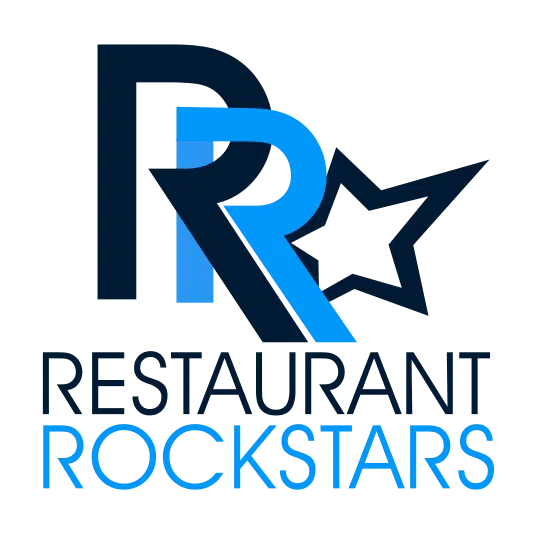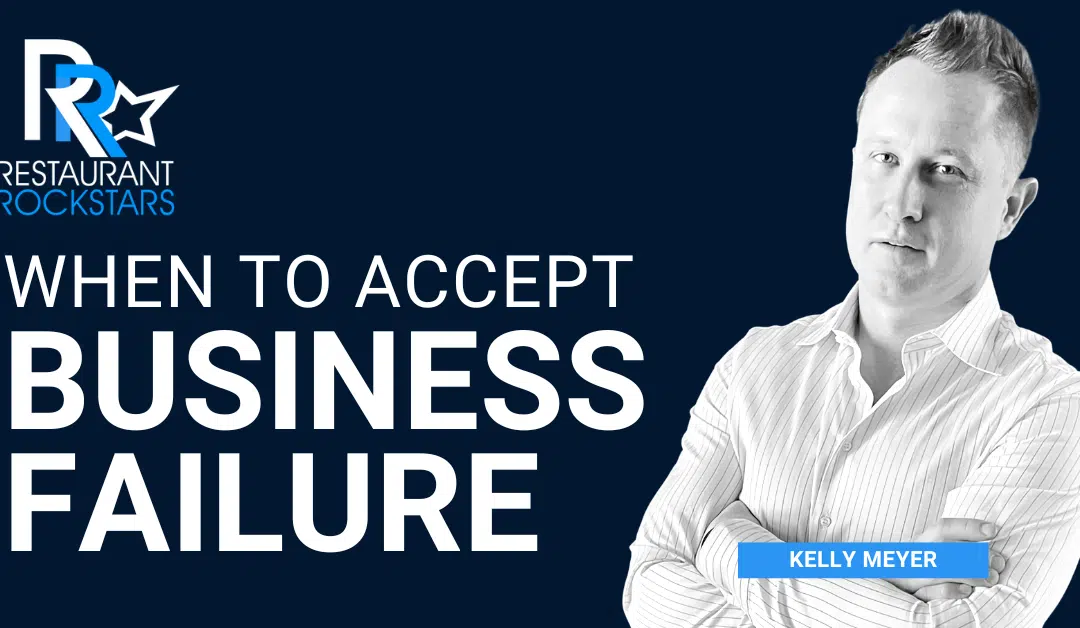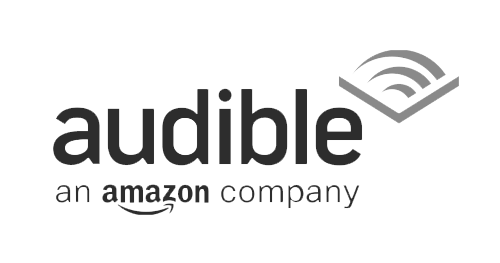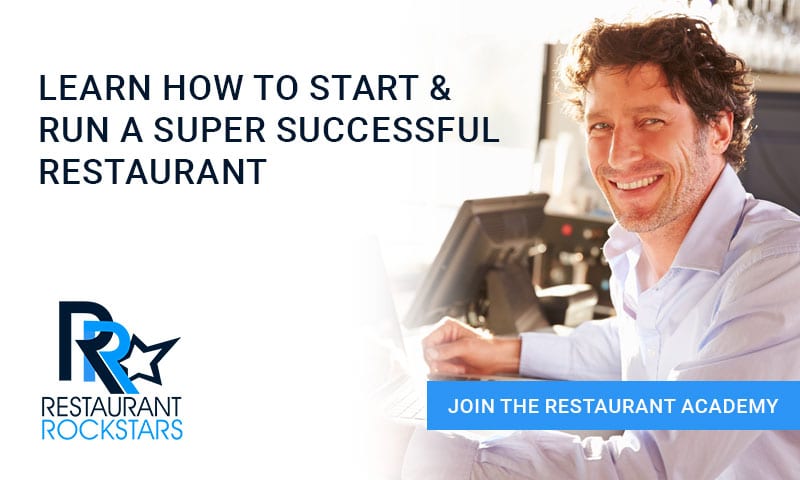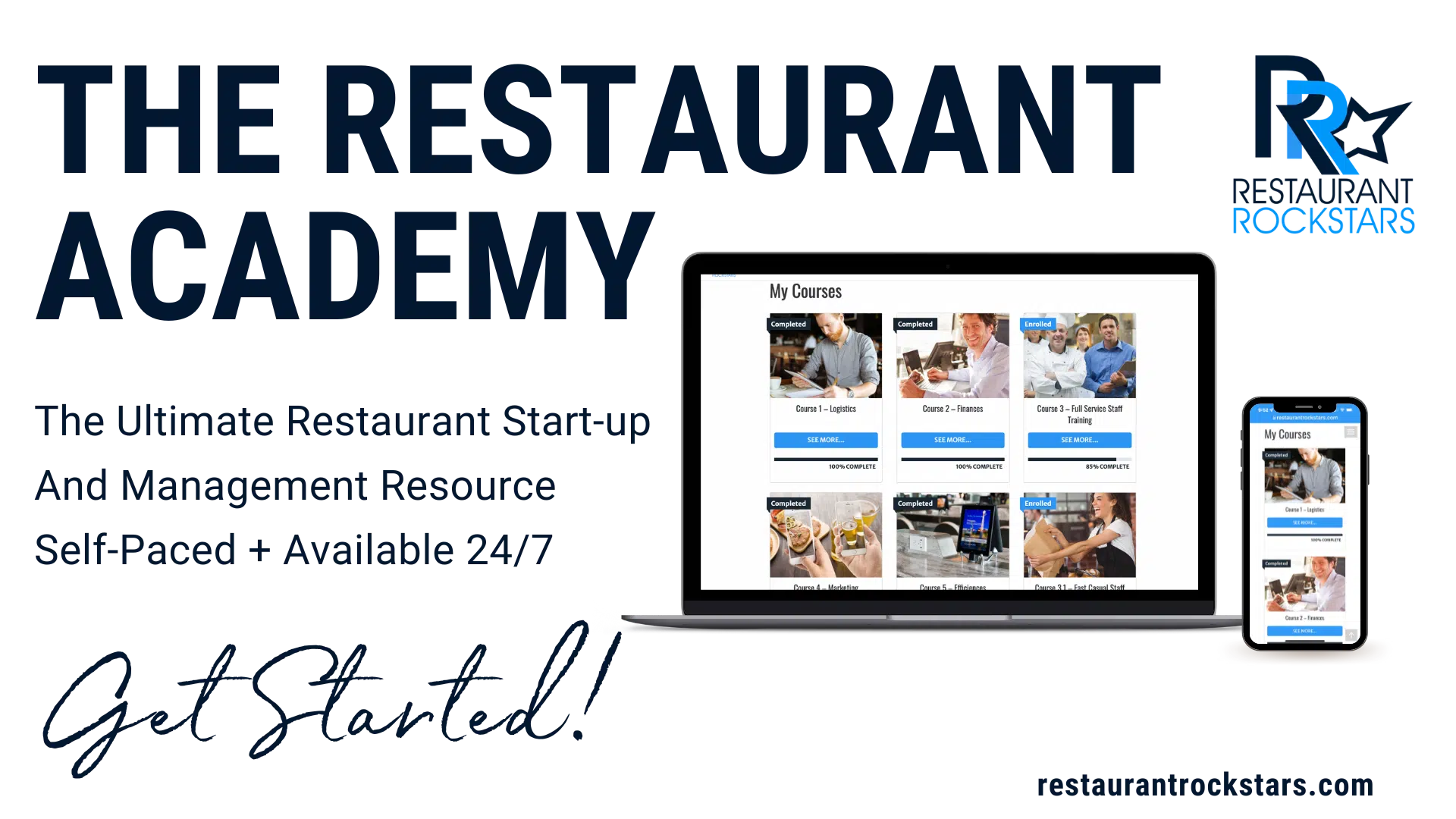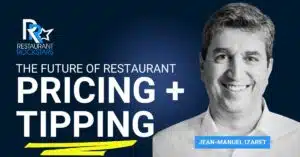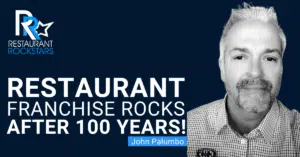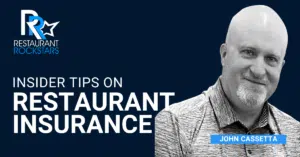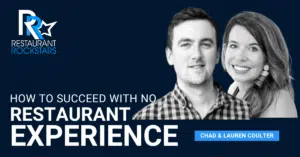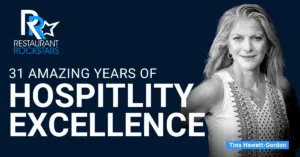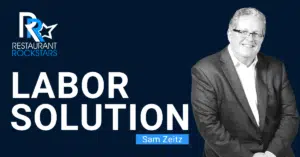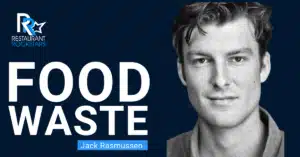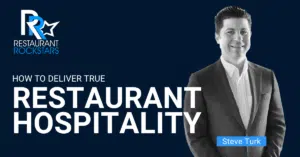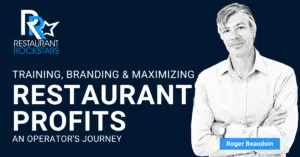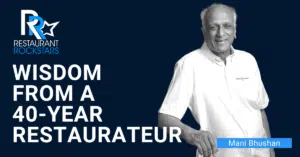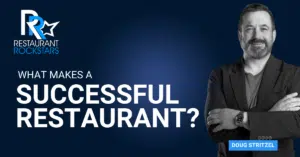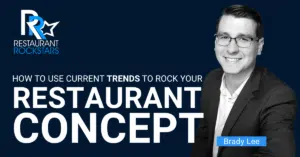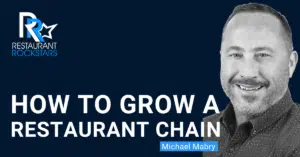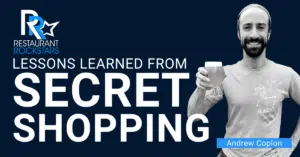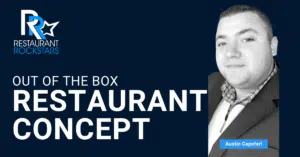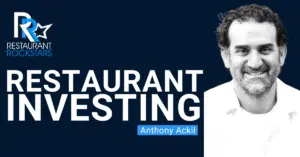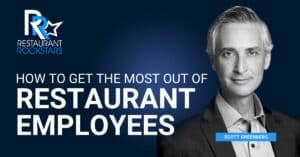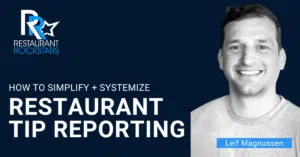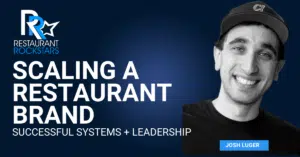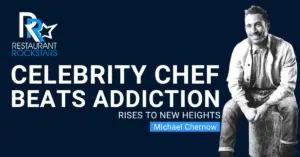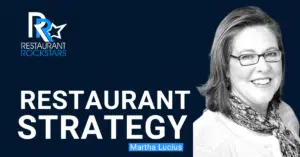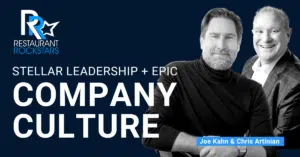Restaurant Rockstars Episode 361
Business Failure – When to Call It Quits
LISTEN HERE OR ON YOUR FAVORITE PODCAST PLAYER
As these challenging times continue, many of us are experiencing the dilemma of possible business failure.
Even with the best of intentions, when things start to go sideways you need to know when and where is the point of no return!
In this episode of the Restaurant Rockstars Podcast, I’m speaking with Kelly Meyer about business failure. Kelly is a former brewery founder/ operator, now author of the book “How Not to Start a Damn Brewery”.
This episode is relevant to restaurants and hospitality businesses in general. It’s all about experiments, pivots, wins, fails, and mostly mistakes to avoid in your own operation.
Listen as Kelly tells us about his business failure including:
- Why passion for beer, wine and scotch led him to start a brewery.
- His early startup lessons.
- What worked until it didn’t?
- The importance of hooks to differentiate your concept.
- “Marketing for business 101”
- The necessary skillsets and business acumen that give you every advantage.
And of course, the years of lessons learned before deciding to pull the plug on his business.
This episode is all about an operator’s best advice when starting or closing a hospitality business, including business failure.
Watch or listen, then go out there and Rock YOUR Restaurant!
Roger
Connect with our guest:
https://www.instagram.com/hownottostartadamnbrewery
https://www.facebook.com/DamnBrewery
https://www.twitter.com/DamnBrewery
https://spotifyanchor-web.app.link/e/jMupprOYqB
Buy the book here >> How NOT to start a Damn Brewery
Hey there. Welcome back to the podcast. Thanks for being with me. My guest today is Kelly Meyer. He’s a fellow podcaster. He’s an author of a book, how not to start a damn brewery. And don’t let the title fool you. Because this episode is not just about starting a brewery, or selling beer. It’s about the restaurant business in general, but mostly it relates to failure. It’s about things that didn’t work and why they didn’t work and mistakes that we might be making that could lead to a different outcome. And how not to be jaded by pride or the amount of money you’ve already spent in something and what the exit strategy could be if in fact, things aren’t going as planned. We cover a lot of best practices. We talk about marketing, we talked about guest service, we talk about hooks, and what draws customers in as opposed to what doesn’t, so we cover a lot of ground. Thank you so much to the sponsors of this week’s episode. Thanks again to you our audience for tuning in. Now, on with the episode,
you’re tuned in to the restaurant rockstars podcast powerful ideas to rock your restaurant, here’s your host Roger Beaudoin.
True hospitality and guests convenience are vital in your restaurant. I’m proud to say that for 23 years my restaurants provided both with paging equipment by J tech. We use guest and server pagers and my teams could not have delivered great dining experiences without them. J tech systems help you run a great restaurant. Now J tech pages are reliable, durable, easy to setup and operate. Guests pagers, increase sales and give guests peace of mind knowing they’ll be called when their tables ready. Staff pages notify when orders are up fresh and ready and save time by eliminating the need for service to check on orders. J tech also offers Motorola two way radio solutions, QR code virtual paging, reservations management, curbside notifications and coming soon LinkWare a wearable watch like smart band that can receive messages and tasks from the J tech LinkWare application. Now I saw this product at a recent food show and it’s really cool. To learn more and get a special offer from J tech exclusively for my listeners, go to www.jtech.com/rockstars. That’s spelled jtech.com/rockstars.
Listen, when I ran restaurants, I had my core values the things most important how I ran my restaurants, monitoring daily operations training my team for consistently great guest experiences food safety, quality assurance and preventative maintenance. All this took a system. Well, here’s what Xenia can do. Xenias gives you a modern app, really an operational base camp that scales standard operating procedures, trains your team controls operations, and even manages food safety. Now I really like their sensors that continuously monitor temperature for fridges and freezers so you can proactively prevent inventory losses. And how valuable is that. Now whether managing a single or multiple locations, the Xenia app helps you ensure consistency, compliance and accountability across your operation. You can see full detail in real time from anywhere in your Xenia dashboard with automated reports right to your inbox. Now again, this was vital in my restaurants. Xenia is offering my listeners white glove service with free onboarding and implementation. So you can jump straight into immediate usage and value Xenia starts at just $69 per month per location. So get my special deal at www.Xenia.team/rockstars Xenia is spelled Xenia.
Hey everyone, welcome back to the restaurant, rockstars podcast and Kelly. Hey, thanks for joining me on the show today. How are you? Doing? Fantastic.
Thanks for let me share my story. Appreciate it.
Yeah, it’s an interesting story. And you know, I was reading about your background, and you’re also an author and a podcaster. yourself. And we’ll get into all of that. But there are definitely a lot of business lessons that we’ll be covering today. But it all starts with you know, what’s your story like? Where does your experience in hospitality begin? And I know you’ve got a fitness background also. So did the two somehow combine or just tell us your story?
Now, the short answer is not really I think the the fitness thing was kind of my first career in the sense that that’s where my skill set, my hobbies, my kind of lifestyle, all can sort of fit in. And you know, of course, they always say the best way to ruin a hobby is to start a business around it. And that’s exactly what I did. So, but no, I mean, what happened is it got to the point that I had 30 employees eight locations, doing well the company was great, but like many people and corporate guys will tell the same story. It just started being soul sucking and especially at that level, the people I talked to the members that I engaged with were The people who were happy anymore, they were what the people who had had a billing problem or had wanted to cancel and couldn’t or whatever. And I just I wanted to be at that front point where people were smiling at me again, like the old days when I was just a personal trainer. And so I transitioned into what was the mean next. And I joke with people, I wanted to do alcohol. So my loves were Napa Valley, cab, scotch whiskey and beer. And at the time, I liked living in Texas. So I decided to do something that would allow me to stay here. And beer was only thing that did.
Gotcha. All right. So well, that’s kind of diverse, because beer lovers traditionally are beer aficionados and enthusiast, and they really get involved in nuances of beer. And there’s so many styles and flavors and variations, of course, but it’s rare to hear of someone who’s also into a good Cabernet as well as you know, some single malt scotches, because there’s so much nuance to all different types of scotches also. So that’s interesting that you say so. So let’s talk about you getting into this business. Did you all of a sudden have a brainchild to start a brewery or a bar? Like where did that all come in? And let’s talk about that.
Yeah, I mean, so effectively, we decided to transition out of the fitness business. And so we put, put the business on the market sold it, you know, successful seven figure exit? And then what’s next, right? So, yeah, we, I convinced my wife, I joke during a weak moment, that this would be cool, let’s do a brewery. It was gonna be production focus, not so much hospitality at the time, because the laws in Texas were different. And they changed maybe two years after we open, were at the time of production brewery couldn’t have a hospitality piece, or not really, you could do tours, but not no booze over the counter for for tabs and tips, you know, is different. And so we originally started doing that. And as the industry transitioned, I obviously started having fun in the hospitality piece, we opened a tasting room, we did events with bars and restaurants around Texas. And so really started enjoying that part of the process. But the hospitality initially wasn’t really a piece of what the brewery was, I guess a good way to say it.
Okay, so it sort of evolved over time. So did you find a space a lease space? Or did you own property? What happened there?
No, but if you listen to my podcast that will tell you that you should always buy your property, because the people who have come out of this on the back end happy and successful. By and large, were the ones that invested in real estate that went up 5x Instead of rent that went up 5x
agreed, I’m a total believer in that. And that’s what I did as well.
Yeah, well allows you a lot more flexibility to to revise, if times get tough or whatever, you’ve got an asset but, at the time, we wanted to be in downtown, and there was not very much real estate available. We we looked for probably six, eight months, couple of options that could have been purchased. And then the one we settled in, because we needed a cement floor, we needed to be near the bars and restaurants, just and it just didn’t work. And so the one place we were able to find we had to rent and that building, I believe they purchased for around $300,000. And based on taxes, I think today 13 years later, it’s worth a bout five times that.
Okay, you know, similar to me, it’s like I wanted to build a building, buy land and create this great concept in a great location and similar story. It’s like I had to walk before I could run. And when I was looking for financing, the first question is, so how many restaurants or bars you ever owned or managed before? And I’m like, Well, I’ve never been in the business. But I got a great idea. Read the business plan, you know, it’s really hard to get financing when you’re looking for while this was 28 years ago, I was looking for a million dollar loan myself to do what I just said, because then you got to fit it up with equipment and furniture, fixtures and have working capital cushion, all that kind of stuff. And it was in my business plan, but no one was gonna throw a million bucks at me. So, you know, finally a banker said if you scale this thing way back and might give you $150,000. And obviously you can’t do much with that. So you find you find a space on the wrong side of the railroad tracks with a leaky roof and no parking and hope for the best. So yeah, that’s that’s kind of how it happened. All right, so let’s talk about how elaborate that first concept was. I mean, did you bring in like brewing tanks and all that kind of stuff and brew your own beer on site? And you talked about a tasting room? Like tell us about how elaborate your first concept was before it evolved into more?
Yeah, so my opinion, the difference in the different models, like if you open a bar, obviously there’s capital upfront, but I think that’s a much lower barrier to entry. And the restaurants are gonna be more similar probably to what a production brewery or at least an on site small production brewery be like, you just can’t do it without 100 grand worth of equipment. And that’s typically kind of scraping by and getting equipment that isn’t super intuitive and maybe isn’t even efficient. And so it’s capital intensive, for sure. So our problem was to knowing that in the beginning, we did get a smaller system and I definitely recommend against that in the book. And vehemently ever since. Yeah, for those reasons, it just it didn’t make great beer. And you know, they always say the best artists can make a Picasso painting with a piece of charcoal. But why would you ever want to do that? If you could just invest a little bit more and better equipment?
Yeah, buy the best that you can afford? And obviously, yeah, cheeping out on things never works out in the long run for the best so that that’s helpful. Were you the brew master? I mean, do you have that skill set?
Yeah, I mean, as much as most people did in 2011, especially Texas, and then really the broader market overall, you know, we went from 1600 breweries in the United States in 2010, to almost 10,000 today, and we haven’t been graduating that many more experienced brew masters from the various colleges around the world. So a lot of us were home brewers that, you know, and I’m sure that’s a lot in the restaurant industry to get a home chef that is really, really good. But that doesn’t necessarily scale to the scale of a five gallon batch to being able to make, you know, a 15 barrel batch, which is 500 gallons. So there was definitely some learning curve. So when I say I knew how to brew, I did not know how to brew on that kind of a system. And so that took a lot of time figured out.
Yeah, and you got to come up with, you know, products that really have that flavor profile in the different variations and genres of beer that people really just instantly love and gravitate to. Because it’s such a competitive segment and minutes remains. And we’re going to talk a little bit about the disruption in the industry. But still, it’s like, I can’t imagine being a homebrewer experimenting and trying to put out a product that will actually be attractive and appealing to the customer and and sell and then put you on the map so that you can continue building the business. I’m sure that was a challenge for you, at least at first, right?
Yeah, well, let’s well, especially now compared to then. And obviously, that’s a question I asked in the podcast a lot. Would you do this again, and the market is so dramatically changed in the last decade. And as it has for restaurants, that the way to get attention then is dramatically different than the way guys are getting attention today. And I would never have wanted to do what they’re having to do today. So that’s part of why I no longer own a brewery. So
yeah, I mean, beyond food operations. I mean, a lot of the breweries that are here. Well, first of all, I’m in Portland, Maine, which is a hotbed for craft brewing. And of its countless number of startups continuing to this day, as well as established breweries that have been around for decades. But it’s like they started off brewing a product, and then they had to bring in food, obviously, and do a brew pub and all to round out their offerings. And now it’s, it’s Well, I wouldn’t call it a trend, I’d say it’s a it’s a mainstay that most of the most successful breweries are packaging the product and selling it in supermarkets and other retail outlets, and all that sort of thing. But it’s also a collaborative business where, you know, there’s a cannery that combines with a brewery or you can get contract brewing of one beer from some other producers and put your name on it and private label it. And it’s a really collaborative industry, at least here in Portland. I mean, I can’t speak for the industry as a whole. But that’s what I’m seeing here based on my own experience, running bars and restaurants. But it’s really interesting that there’s so much to it. And you know, the detail involved in it. I mean, I call this business in general 1000 details, but then suddenly you add the brewing component besides just buying an existing product, you know, brewing it yourself and trying to stay ahead of what’s happening in the competition is a huge challenge, right?
I mean, it’s amense challenge. And it’s amazing how many people get into it, not understanding how challenging it’s going to be. Because you know, on paper, you’re an existing restaurant, you’ve got clientele, they’re coming in, you’re buying a keg for X and selling it for 5x markup, what if you could produce that keg yourself, and it only cost you 20 bucks, which is what it looks like on paper. But there’s so many more things.
you know, thanks for sharing that. Because it’s true. I mean, we’ve always heard how profitable it is to brew your own beer and sell it versus like you said, buying it from a distributor where, obviously the middleman is involved and all that other kind of stuff. And yeah, the profitability is there. But it’s not to what it is if you were to brew it yourself, but then there’s so many unseen, you know, pitfalls and challenges that come with that. And I’m sure you can tell us about some of them.
Yeah, especially I think scale is the biggest thing that you know, there’s a guy I’m interviewing, actually in two weeks that that was exactly the story. It was a small bar restaurant Tavern in Southie. south of Houston, I think southwest of Houston. And they were one day they just said, Hey, why don’t we put a small system in this little room we’ve got in the back, we’ll brew beer and what’s the worst that could happen? It’s going to be great. And you know, a couple batches with quality issues. You’ve got some some stuff mash, because again, the smaller equipment doesn’t have the same kind of technological advances to it. And so there’s a lot more waste in it. And then how do you pay a guy a living wage to produce a small amount of beer, he has to be enough of a volume to be able to afford him and, and they just sort of realized that that wasn’t the case, they weren’t profitable, and it just wasn’t working.
You know, you brought up something that comes to mind. So I competed for cheese a couple of decades with a brewpub that had a better location that I had. And they were the dominant place in town when I started my business. And my goal was just to get in there and kind of take them down and become the dominant place, which I ultimately achieved. But they were really, really successful. And they poured a lot of beer, but they had septic issues, because what to do with the raw byproducts of the brewing process? And how do you dispose of that, and they ended up dumping half of it in the septic system, which was clogging everything up. And I swear that septic pumping truck was there, like three times a week, like all time I was there. And I’m like, you know, there’s just a question. It’s like, you’re creating byproducts of your beer product that you then need to get rid of to clean out your tanks or wherever that stuff goes. I mean, what do you do with it?
Well, that’s the thing. So there’s ways to neutralize what goes down the drain. And you’re supposed to do that, when again, depending on scale, so at the smaller scale of, of the guy, like the guy, I’m interviewing a couple of weeks that if you’re producing, you know, let’s say 10, kegs a week, you’re not really dumping much more down the drain than you would as far as acidity and from the cooking process, right. And cleaning equipment. But as you get larger, the tanks get tougher to clean, you can’t have mechanical action scrubbing, because you’ve got to have heat and chemical action, which means you’re going to use a lot more kind of caustic chemicals in a lot larger quantities. And you can reuse those, but that then requires another five or $10,000 piece of equipment that not every brewery was going to invest in. And so a lot of that gets dumped, because it’s cheaper to dump, you know, six cents worth of the chemical than it is to buy the equipment to reuse it. Right. And so we had to meet with the city and the city wanted to know what our fluid was, and they had the right to come test it. And if we exceeded a certain parts per million of different things, then they were going to either tax us to deal with it. And or require some sort of like treatment before it goes down the drain.
Gotcha. All right, let’s pivot. Let’s talk about the evolution of of your brewery Did you eventually turn it into a hospitality operation serving certain food items.
So we never did food? After I sold in September, the new owners did do kind of a small, basically Pizza Kitchen with a local restaurant that pre made the pizza and then they would just put it in the oven and send it out or do they still doing that? So we didn’t, we didn’t have a space. So food was definitely a problem. And in my chart, in the book, I put in there kind of how we figured out the hospitality space. Because obviously at that point, we were struggling to create an AR business, we needed cash over the counter, because that’s daily. And that was something that was sorely lacking in the distribution model in a brewery. So we started really focusing on how do we get butts in seats and what’s the marketing that works? What’s the product mix in our draft line, all that kind of thing. And food just unfortunately wasn’t possible for us. And so that was a big problem. And anyways, back to the book. So yeah, I, I show a chart. So like, average, Saturday, over six months, it goes 11 o’clock, 12 o’clock, three o’clock, four o’clock, five o’clock, six o’clock, seven o’clock. You just dies, everybody left to go get food. And so as a huge problem in our business.
I say, gotcha. So let’s talk about how long did you run this place? And let’s, you mentioned the word marketing, which is critical to any business. And I’m sure there were a lot of pivots and experiments, but how long did you run it? And was there a time where it looked like it was really going to take off and that it was working? I’m trying to get a sense of you know, how long when you decided, okay, it’s working, it’s not working? I need to pivot to this pivot to that. Just give us the whole story. And then how you ultimately decided to close it.
Yeah, so I would say it was a joke. It was an 11 year sentence. And so I served my time in the growing industry. And I obviously still in the industry, but But yeah, so it was a long list of pivots, to be honest. And that’s one of the things that my I did a video blog about why I sold the brewery and I kind of put the five catastrophic moments in there that these were the things that any one of those I could have maybe should have walked away, and I didn’t. But even in the beginning, we started off as a production facility. And then so we didn’t have the tasting room. Two years in Texas changes the law where breweries can have a tasting room. Okay, sounds great. Well, we didn’t have one so we got to build it right and make it pretty and make it fun. And that didn’t work. So we built it. It wasn’t that pretty, it was cool but didn’t have enough seats. And it wasn’t an efficient use of space. And, and we actually had to close for three months to do that, which is just like anyone could imagine not fun at all financially
Of course yeah, loss of business, loss of market, people move on to other things and trying to get them back is a challenge. And I hear you.
And so like I said, we started with a small system. So during that time, we realized that we couldn’t do the scale in the volume that was going to be needed to actually make any real money. So we tore the whole thing out, ordered a new system from Europe, for $350,000.
It’s a big capital investment.
and started over, built a tasting room. Things look good for a minute. This is like, 12, 13, during the time when Kraft was really starting to take off, and they had some distributors that got on board here in Texas, we’d get some new accounts in then what happened is that because it seemed like a good idea, to me, it seemed like a good idea to everyone. And the growth. You know, I think Texas had 140 breweries, maybe when we opened and now there’s 400 500, almost, it just grew so much that what we and you probably know that from your side of the industry to that every bar did not 5x the number of tap handles the number of beers they had. There are some that did but those were rare. And those were the unique ones. So there just weren’t places to sell. And so then we pivot to packaging and the tour now we’re deeply into the bottles in the you know, which states can we get into and ultimately went up to seven different states around the United States with different distributors. And it always was a great lead in we’d send you know, pallets of beer in they placed the pallets, they set up a second order, and then usually it would kind of stagnate out as again, there’s just there’s so many different breweries domestically, they were they were and then other breweries trying to come in. And it just a competition ended up really kind of choking out any profitability there. So now if you ask people, most people would tell you the pivot is back to the tasting room, and that the breweries doing well are out of distribution. And now they’re competing with bars and restaurants directly for butts and seats. And we did same thing, just, you know, new new seating out front, tried live music, different events, different types of beers that we were releasing different marketing approaches to do that. And there are bars in San Antonio to this day that won’t sell certain breweries because those breweries charge $1 less for their beer at their tasting room and it makes it hard to sell.
Oh yeah for sure. So you’re mentioning San Antonio, is that we are operational is located.
Yeah, joke people. If you fly in Austin and drive south right about the time it stops sucking. That’s where we are. We’re in a city called New Braunfels, as to two rivers in town, world’s largest waterpark, we’re a fun little area, but we’re definitely kind of between the two big cities, which makes esoteric breach that challenge and the small German town so
okay, oh, it’s a German town too. So we’re the styles of beer prayed primarily German beers to apply, you know, to appeal to that customer. That clientele?
Yeah. So they were when we opened I did all kind of German wheat beers was my thing. That was that was our niche. And then I transitioned primarily. But we started experimenting with mixed culture and more Belgian styles, French inspiration. And then in 2017, I went completely farmhouse where everything was a mixed culture, a little bit of balanced acidity. Like we’ve mentioned in the beginning, I have a palette that appreciates wine. And as much as that made beautiful art and made things I was very proud of. I think it was a massive detriment to my career as a brewer.
well, I’m curious. Again, let’s go back to that for a second. Because you mentioned an interest in in fine wines and scotches and all that, did you bring in any of those products at all to round out your offerings or maybe appeal to the ladies or that kind of thing? In addition to just the beer?
I did in the tasting room, we coudn’t do spirits because well, we could but the way Texas works if you do spirits, it doubles your taxes changes your whole licensing and stuff like that, of course. And so you have to you can’t dabble in spirits, you’re gonna do spirits need to shock girl you got to have Jager bombs. And this wasn’t what I wanted to do. So I did bring in wine. We’re in Texas, people were proud of Texas, so is primarily Texas wine, did ciders, guests beers. So we can appeal to the docentes drinker that didn’t really understand what we did on our kind of fringe offerings. And some of those were successful. But you know, ultimately what you find is that most people that go to a brewery want to drink the brewery stuff, so it would have been better if I had private label that pretend that it was mine, I think but we did get some sales out of it.
Okay, gotcha. So, a hook. I’m a huge believer in hooks. And obviously our audience knows that that’s something that sets you apart from the competition. And it’s something that captures the guests imagination and all that, and successful restaurants that sell beer. Well, a big draw is you mentioned earlier number of tap handles. And it’s not uncommon here in the Portland market to walk into a restaurant that literally has 20, tap handles, and you can see it and it’s visible, and they have mug clubs and all this kind of stuff. And that is a draw unto itself. But is that something that is a limiting factor when you’re starting a brewery because you’re not going to brew 20 different varieties of beer and have 20 Different tap handles? Isn’t it mostly like four or five or six specialty beers that maybe have different styles? But it’s not an extensive offering, in an operation like what you had? And was that something that you found hard to compete with maybe other locations or operations that had lots of taps?
Yeah, well, I think it’s an interesting. Well, I don’t have to say, interesting, I kind of railed against the prevailing concept of the brew pub is that you basically make everything you’ll have an Irish stressed out a Belgian witbier, you’re going to have a German wheat beer. And if you think about it logically, outside of like, Cheesecake Factory, most restaurants would specialize in something. By not doing that it’s different yeast, it’s different palates, it’s different water chemistry, it kind of doesn’t make sense for that we find ourselves in a situation where we feel like we have to be all things to all people. But from a business perspective, breweries that don’t struggle, and you don’t really have a choice. And so normally, what I’d recommend is you have a guest for your program, and the guest beers are the ones that will fill the holes that you have, cuz you’re always gonna have some gaps in your experience and abilities you should write because you can’t, can’t walk in and specialize in making certain styles of textiles of things, and then also have a palette for everything, you should understand your limitations, although, again, it’s this juxtaposition of you kind of can’t, but you almost have to. So
okay, let’s go back to marketing for a moment, because you mentioned Okay, there were certain turning points in my business where I should have turned back, but didn’t was marketing a big part of that? And did you find that there were certain things that kind of were working and you thought, Oh, if I just double down on this, it may turn the tide or, you know, let’s talk about your marketing program and what you found to be working and how you attracted customers to your place, and what worked or what failed. And, and then I want to dig a little deeper peel back that onion about okay, I should have turned back. Now this, these were that signs on the wall, but I, you know, I refuse to look or, you know, believe it was happening, that sort of thing. So marketing, talk about that point of no return.
All right. Yeah. So marketing, I honestly struggle with a lot. And so we actually had a conversation with a guy yesterday about, he was like, Well, what percentage of your revenue do you allocate to marketing? Or do you recommend a very allocate to marketing? And I absolutely hate these kinds of things, because I think that they add weakness to the model. And so someone can just say, well, it’s supposed to do 8 percent, so I’m just gonna throw money at this. We I was always more strategic. And because I came from the fitness industry, I think that’s part of it, where we would do anything. And it was all about the ROI. I used to joke I was the only millionaire walking around in the July Texas heat putting flyers on houses, because that was the single best return on investment that I could come up with in that industry. Yeah. And I tried to, you know, try to translate that to the beer industry. And not only were some of those tactics that we employ, they’re illegal. But they also just weren’t always effective. So the short answer is, I never really found a great marketing source that I could tie it ROI to and say, if you do this one, you will always have a return. It was seasonal, it fluctuated. We tried a variety of different things. And at the end of the day, for us, the only thing that really had a great return on investment would be in store samplings. Generally it was fairly cheap return on investment. As far as getting seats and butts in the brewery. You know, the things like advertising coupons on Google, I got a good return on those. And obviously, they were fairly cheap for what they were. But you know, newspaper, radio, even Facebook ads, you’d get likes, you’d get your views but it didn’t necessarily know I got barely saw someone come in on Saturday and go, Hey, I saw that post you did yesterday. I mean, it happens but not enough
you know, thanks for sharing that. That’s a message that a lot of restaurant and bar owners really miss. Because this is a business as you probably recall, where the phone rings off the hook. Someone’s always trying to sell you something you think you don’t need or people show up unannounced at the back door without appointments all the time trying to sell you stuff you don’t think you need and then every once in a while again caught in a weak moment where something they say strikes a chord in you. And you’re like, Yeah, I’ll try that you know what the hell and sign up for a radio ad or something. And the point you’re making is it’s not trackable, unless everyone who walks through the door said, I saw your Facebook post, or I heard on the radio, you would never know if there is in fact, a return on investment. And we can spend 10s of 1000s of dollars on those marketing things that you just don’t know where the business is coming from, or if it’s driving any business at all. So that was a great point that you shared. Thanks. Thanks for that. Let’s talk about the location. Was it a high visibility area? high traffic location? Was it off the beaten path? Like what were the limitations to it? Or was it a good location that drove some business?
It was a decent location. So then, in the city, I mean, we have a, like an actual, like, physical center of the city. And there’s a gazebo there, there’s a circle around it. And so we have kind of this downtown feel. They’ll block the streets off, we’ll do you know, festivals and events and musical things. And we’re two blocks away from that, like one block down one block over that same section still be blocked off in most of those festivals. And there’s a lot of walk in traffic. Okay. It’s downtown. So trap parking is always an issue, but walking walkability wise, it’s good.
Yeah, you’re making a good point, whether this parking or not, like if there’s a downtown area that’s still vibrant, as opposed to an old tired downtown that’s on the way out. I mean, people will find a way down there. And walking is a big thing. And sometimes, you know, people are even do the pub crawl thing wrong and go have a beer here. And then I’m gonna go have a beer there. And it’s like, it’s what people do. Alright, I mentioned earlier, I really want to unpack a little deeper that point of no return in your business. Now you, you recognize the fact that you made certain mistakes in that business. If you feel like it, you can certainly clarify, because I know that’s a big part of your book, which I liked that you’re standing in front of, or you’re sitting in front of that the name of the book is how not to start a damn brewery. And now it’s also your podcast. So you want to talk about certain mistakes, and then talk about where you should have maybe seen the writing on the wall a little sooner and maybe why you didn’t?
There are many elements to consider when growing your restaurant. are you connecting with diners enough and with the right message? Could your kitchen be putting out more orders than your dining areas have room for while it can be overwhelming, especially when the reason you got into this business is for the food and the people. That’s why restaurants get pop menu. Pop menu is the marketing tech platform designed to make growing your restaurant easy, so you don’t have to grow it alone. With pop menu, you can capture more guests and their preferences through your restaurants website that’s designed to easily collect contact information and data. So you can see what your guests love and why they dine with you connect and build authentic relationships with guests by using modern technology that personalizes marketing, make all your systems work better together, improve margins and conquer the chaos of your restaurants digital presents pop menu as a special offer for my listeners for a limited time get $100 off your first month plus lock in one unchanging monthly rate at popmenu.com/rockstars Go now to get $100 off your first month at popmenu.com/rockstars.
Yeah, I mean, I think it’s an important part of what is the kind of going on in our industry. And I’d be curious your feedback, whether that leads into bars and restaurants because my experience is I don’t see it. But it is rampant and beer and that’s a toxic positivity is the best way to say it. The big Association, the Brewers, Brewers Association, and even different publications that publish different articles and things about the beer industry, they just refuse to say that anyone struggling. And so we all kind of continue this fight, right for years, and beer is growing, the number of outlets is growing, the much less of a scale, but the market penetration is growing and our market share versus the big beer is growing. Blah, blah, blah, blah, blah. And then when you struggle, you just sort of think like, well, must be only me. So I’m going to refinance this, I’m going to pivot this I’m going to partner up with this, I need one more distributor maybe to open this market and continue to grow or, you know, I added tap handles into my tasting room so that I could have four more offerings because that should bump things. But when it really got bad. I started asking, what I decided is that the business as it was was not going to continue to grow. And we were a niche and this was 19. There were some other mistakes in front of that too. But this is 2019 and so I call some people around the state and I said okay, here’s the deal. I’m shipping out of state I’ve got distributors all over. And I have but I have a unique and then each product so the More like it and more like a wine palette. What if I partner up with someone who just does very simple beer has a good hype train. And I’m the mixed culture version there that and we combine forces, I sell their beer in my tasting room, they throw their beer in our pallets, we send them to Florida, everybody wins. I could not find one that was profitable. So when the the issue became, yeah, everybody knows you. You’re the most popular brewery in San Antonio. But you’re losing 20 grand a month, I’m losing five grand a month, let’s combine forces and lose 25. That sounds really stupid to me. And so that was when my eyes kind of got opened. And the more people I talked to the more I realized that profitability is not happening. It’s just kind of a lie. And so that was when I started the book to figure out, what did I do wrong? How do I fix this? And how do I move forward? And the reason the book is not called how to fix your breweries, because I don’t know. No one else. But I know what to do wrong. So I’m really good at that.
Awesome. Yeah, I hope everyone listening is intrigued and gets the book and reads it, I’m looking forward to reading it myself. So let’s talk about mug clubs. Because in my experience, mug clubs are a huge source of cash, especially if you get a sponsor, so you don’t have to pay for the mugs, and the T shirts and all that value added. And your customers can become your best brand ambassadors. And it kind of grows if you start a successful mug club, and one member tells another member to join, and they’re paying your membership cash pretty much every year. And that can be anywhere up to 100 bucks to belong to a mug club. And that’s free and clear cash flow if you find a sponsor, and all you have to do is give great service to your customer. And it becomes this sort of exclusive club where I would rather have my own custom mug that I you know, customize, and then I have stickers all over it. And it’s my thing, and it’s got a low number. And it’s a point of pride versus the average tourist or customer that has a standard pint when all these people have mugs, and then that sells the mugs unto themselves. Did you have one of those? And did you have any success with that if you did.
So I didn’t do a mug club, I have interviewed some other breweries that have, in fact, the most recent interview I did was with a guy out of Chicago, he had a mug club, and he was on my podcast because he closed down it didn’t work for him. But what I did have is a bottle club. And we kind of treat that the same way. And so they would get like a wine club, they’d have no quarterly allocation. And because of that, they got free flights. When they came to the brewery, they got discounts on everything. And I struggled to get as many people as I think we had, like 100 at towards the end. And for that to be viable for me in the for two been a viable reason to continue. I was targeting 250 to 300. And in my small town, it just wasn’t going to happen. And I think that could have happened in in Austin or Houston or Dallas. But in my small town, it was no way to make that work. But I have talked to other breweries that have done well with it. There’s one in planning right now in Texas that’s charging $1,250 For there’s
no kidding. wow woah, I wonder, wow, that I can’t imagine the value added. Do you have to offer to give, you know, to give people a reason to pay that kind of money. But wow. Yeah. Anything in between? That’s that’s killer.
Did on the Facebook thing, trying to look for a decimal point. And I couldn’t find when it’s actually $1,250
going, oh my gosh, wow. Okay, well, you know, who knows, maybe it’s working somewhere. That brings to mind when I was a younger person, my best friend. And I used to go to a place that offered a hunt they had they had a beer club. And the whole point was you want to get a checklist kind of a scorecard kind of thing and beers around the world. I think they had 100 different beers. And we would go in there and it was like this well, one, it was kind of a point of pride to like, tick off the different countries and try the different styles. And then you really kind of get into beer, and you really can sort of compare one to the other. But it was a reason to have loyalty to this place. And it was a smart marketing hook for that place to encourage as many people as possible to come in and drink 100 beers there. You know, how long would that take and how much food you’re gonna buy along the way as well. So these are just some marketing ideas. I’m sure you’ve seen some of those also.
Yeah, there’s a place in San Antonio other actually a change. They’re all over. But the flying saucer does that. And multiple people will have a few of those 100 clubs, like they’re just they just keep going. It’s crazy.
All right. So we talked a little bit about the point of no return. But you know, it’s kind of a point of pride. you’ve sunk so much money and so much time and effort and sweat and tears into a place and some people just can’t let go it becomes their identity after a while even though they see the bleeding and they see the money and some people have deeper pockets than others but God what a challenge like I’ve been in similar situations, not everything that I started turned to gold and that is a you know, it’s a magic moment. Meet, you get to where you suddenly realize I’m either gonna make it. And I’ve got to do I got to double down and make it happen, or I just got to shut down. And then you try to sell something now you actually sold your operation, right, but you lost money on the sale.
Right, I sold the assets for dramatically less than I invested. But I was pretty thrilled to walk away with any money at all. And that’s in that situation. And so we closed on September 3, and I had not paid the rent on the first. And by the 20th, I wouldn’t have been able to. So at the end of the day, I got very lucky that it all worked out in that sense.
Yeah, you know, it’s such a fickle business, whether you’re talking restaurants or bars, you go into it with the best of intentions, you work really hard. If you try to hire the right people, you try to spend money in the right areas, and all that kind of stuff, you think you’re picking a great location, you think your concept is dialed, and then you get into it. And you know that if you build it, they will come doesn’t always happen. And you know, that was a situation I had years ago, where Mexican food was absolutely the hottest thing on the planet, I had a great existing business. And then there was a piece of real estate for sale, that was a failing restaurant, I thought I could turn it around with this Mexican concept. And I spent money and I bought the land. And I tried to put all the pieces in place. And ultimately, it wasn’t working. And thankfully, I mean, there was a Hail Mary in this that some people that were on serial entrepreneurs in our community used to be in the restaurant business like a long, long time ago. And suddenly we you know, we convinced them that maybe you want to get back in the restaurant bar business. And they did and they ended up leasing my my property that I owned for two years, they continued to improve it, they paid all my expenses. And then they ultimately purchased it for me two years later. So it really worked out well. For me, it doesn’t always work out in every case that way. But you know, you got to keep all your options open when you’re in this situation and try to get out with the least amount of damage. So maybe maybe some hurt pride and a lower bank account. But like you said, Oh my god, I got down on my hands and knees and kissed the ground when we when we signed the papers. And we were done. So I know that feeling as well.
So well, like you said I think the real estate’s a big part of why that worked out for you. So that it did that makes a difference for a lot of people.
Yeah, you know, you mentioned all the points earlier in this podcast about why if at all possible, you should have that long term vision of buying the real estate just to control your destiny. I mean, I got stories where you spend years building a successful business and you got a lease and then all of a sudden, the landlord doesn’t renew your lease, because the highest and best use of a property is not your restaurant, your bar your brewery, it’s a condo building, you know, and I’m going to level this building and build condos and make a fortune. And I watched that happen here in Portland, Maine years ago to one of my favorite places, they had to move away to another community maybe 10 miles away and rebuild that business from scratch after having a viable, thriving business. So yeah, I mean, you have to be able to look around corners, and we can’t in this business. And most people do get into it with a lease because it’s easier, it’s less expensive. But if you build something successful, you should always have your eyes on the prize. Where can I you know, can I by this location that I’m in from the from the landlord? Or can I find something close by that fits my needs? But thank you for starting off. I’m a huge believer in that. All right, let’s talk about the craft beer industry in general. I think you caught my attention with Anchor Steam, and I wasn’t even aware of that. I was certainly aware of that beer. I think it was San Francisco based wasn’t it? Or was it Oregon?
Yeah, the San Francisco. Okay, so
tell us what happened there. And then let’s talk about the industry in general what’s going on.
Um, so obviously, from the outside looking in, you can make speculations but ultimately with anchor, they’re kind of where the Fritz specifically who bought Ankur back in the day, and kind of like turn it into the, I guess you could say the second microbreweries New Albion supposed to technically be the first little bit north of there. And just was sort of the first guy to make, you know, full flavored beer, make it in, you know, fun little bottles and got nationwide distribution. But like you’re seeing recently, and I think you’re gonna consider continue to see quite a bit of it. The industry is just kind of, I mean, it’s in a bubble. There’s no doubt but it’s just gotten to a point where it’s so crowded that people still love the beer. There’s this major backlash that it went away, but they weren’t drinking it. And have they been drinking it over the last 10 years and buying anchor and stuff in their fridge full of it. Nothing would like that would have happened. So they sold the brewery to a conglomerate, which is pretty normal for a brewery of that size that you did pass it on to your kids or you’re going to sell it to one of the big players. And the big player just didn’t invest in growth. No one’s really sure what their plan was. It sounded like it was to brew one of their other beers there and then realize that the style of equipment they had they couldn’t do that. So there’s, of course conspiracy theories that support I tried to kill it, I don’t have any reason to believe that I think the brand just moved away just wasn’t popular anymore. They didn’t make a hazy IPA. So they’re screwed, right?
Let’s go back to packaging for a moment. Because you go in any supermarket today, and there’s like, I don’t know, 100 yards of fridge space devoted to craft beer, at least in my town. And I don’t know much about beer, because I’m not really an aficionado. I don’t drink it so much anymore. I’m more of a wine guy. But it’s like, I walk into that supermarket. And every single packaging is vying for my attention. And a lot of it the names, the graphics, the colors on these cans, is like overwhelming. But often, I’m sure most people select the new beer just by virtue of what the packaging looks like, if it fits their style of drinking. Oh, there’s 100,000 IPAs out there. But wow, look at that cool package. And that cool name, I’m going to try it. So suddenly, you need to? Well, very few of us, like you said, our marketing experts. But now you need someone with amazing graphic talent, right? And really creative naming ability to come up with a product. And you know, and that’s gives you a sort of an edge in the marketplace. But then if you’re a restaurant or bar owner, it’s like, do you select beers just by virtue of what the packaging looks like? Because that’s going to sell more beer in your restaurant or bar? I mean, what are your thoughts on that whole packaging versus the actual quality of the product within.
They’re rarely scaled together, they’re disproportionate in most places. So what you see a lot of times is that the larger players obviously have the money to pay the graphic designers to do the focus groups to figure out what’s going to get the eyes where they need to be to get people to buy it. So it’s a chicken in the egg, you can make the argument but the reality is that the most branding only has a short shelf life, no pun intended. And so you see a lot of rebranding.
Oh, even the same beer or the same IPA, or whatever we’re talking about may go through transformations over the lifecycle because it starts off hot then they notice it starts to level off. So now we got to rebrand that beer to get the sales going again, is that is that what you’re seeing? That’s what’s going on?
Yeah, when I’m sure every industry is like that. But for us, especially there’s a distinct lack of creativity in the beer industry. And so at the end of the day, everyone’s making the same 50 styles. And there’s 10,000 breweries, right. But if there’s a successful branding piece, it’s inspirational, cool, and gets sort of like the zeitgeist of the culture, it gets copied a lot. And so then they’ve got us almost break away from the mold that came behind them. So you see a lot of changes in there. But in answer to your question, I actually have asked retailers this question, particularly on the podcasts, like how do you select beers, some of them will go to rating sites and decide, you know, based on the consumer ratings, what they’re going to sell some, you know, honestly, are going to take the kickbacks, and we can all pretend they don’t happen. But there’s distributors that’ll come in by the kegs, by the first round, spend money. And that matters. I mean, if I was a retailer would matter to me, I get it.
Yeah, thanks for bringing that up, too. Because in our industry, every state has different laws about the amount of value you can accept from a distributor, or, you know, anyone that you any vendor that you buy from when an alcoholic beverages are, but but they all play that game, and they all cross a very fine line. And it’s very easy to make all your choices based on the value someone is at least promising to give you. And then suddenly you run into, you know, liquor law violations, you could be fined, you could lose your license. And again, it varies state to state, but it’s definitely something to be wary of, especially if you’re starting a new restaurant or brewery that’s going to work with distributors and by product. You know, yeah, this has been happening forever. And, and sometimes you don’t know what’s around the next corner. So where to the wise, you got to be careful there. So thanks for sharing that. So we’ve covered quite a bit of ground today. Kelly, anything we missed that you want to share?
Huh, hmm. Put me on the spot? I don’t think so. I mean, other than the fact that at the one one message I like to make sure people know is that I don’t think that opening a brewery is empirically a bad idea. I don’t think opening a bar restaurant is markets a bad idea. I just think that we need to be honest about the struggle. And that’s ultimately what my podcast is about what the book is about. It’s still fun. I still love doing it. And I’m actually enjoying going to bars and restaurants again, like I now that I’m a retired consumer, more than I ever used to. Yeah, and so I love it. So I’m back. Do
you ever go back to your old place if it’s still operating? Yeah, no,
it’s it’s not far from my house. And so occasion I’ll go back there and say hi to the new guys. They don’t make any my old beer anymore. So it’s kind of fun. It’s not like I have to care about the quality or whether they They’ve killed it. They make all new things. So I’ve had some good times over there.
It’s funny when you mentioned did they kill it because I’ve sold several restaurants and bars that I’ve started from scratch. And sometimes people have what they think is a better idea. And they sometimes fix what really isn’t broken, and they end up crashing the whole thing. And then sometimes they leave mostly everything alone, but something that was really strategic or powerful for your brand gets changed. And you’re kind of shocked, like, why would you do that? It was like such a powerful part of your brand. You know, so I don’t know, I’m sort of a, when we’re in this business, we can be sort of critics, right? We go out to dine, and we go out to drink in bars, and whatever. And if you knew that, I used to go there when someone else owned it. Now I go in and you think, wow, it used to be great. And why did they change that? Because it worked so well. And everyone’s obviously got their own opinions. But thanks for sharing your insights into the industry, for being with us as a great guest on the podcast. Kelly, thank you.
I appreciate you letting me participate. And I had a lot of fun.
Excellent. It was fun. And well. Alcohol is fun. You mentioned that when you started the podcast. Yeah, we got out of fitness and we got into beer because it was fun. You shared a lot of key learnings and nuggets along the way and best business practices. So thanks again for being here.
Yeah anything else you do to help let me know. All right.
That was the restaurant Roxas podcast. Thanks so much to our audience for tuning in. Thanks to our sponsors of this episode. And we can’t wait to see you all next time.
Thanks, Kelly, for being a great guest. While you’re really brought me back, you know, I’ve had successes in this business, and I’ve had failures. And you know, there’s such a fine line between when you just sort of see the writing in the wall and things are starting to maybe take a turn for the worse and you think oh, if I just do this, maybe I can turn it around. Or if I just do that or spend a little money here or there. And it doesn’t always work. So you definitely were an eye opener to our audience. And a lot of us are facing similar situations and challenges especially after the last couple of years, we’ve been beaten up bad in this business. And now with inflation and labor challenges on top of all the other 1000s of details we talked about. So thank you so much for sharing best practices in your experience in this business. And thanks also to our sponsors. And thank you audience for tuning in. I can’t wait to see you next time.
People go to restaurants for lots of reasons for fun celebration for family for lifestyle. What the customer doesn’t know is the 1000s of details it takes to run a great restaurant. This is a high risk high fail business. It’s hard to find great stuff. costs are rising and profits are disappearing. It’s a treacherous road and SMART operators need a professional guide. I’m Roger. I’ve started many highly successful high profit restaurants that I’ve now sold for millions of dollars. I’m passionate about helping other owners and managers not just succeed, but knock it out of the park. I created a game changing system and it’s filled with everything I’ve learned in over 20 years running super profitable, super fun restaurants, everything from creating high profit menu items and cost controls to staff training where your teams serve and sell to marketing hooks, money maximizing tips and efficiencies across your operation. What does this mean to you more money to invest in your restaurant to higher management team time, freedom and peace of mind. You don’t just want to run a restaurant. You want to dominate your competition and create a lasting legacy. Join the academy and I’ll show you how it’s done.
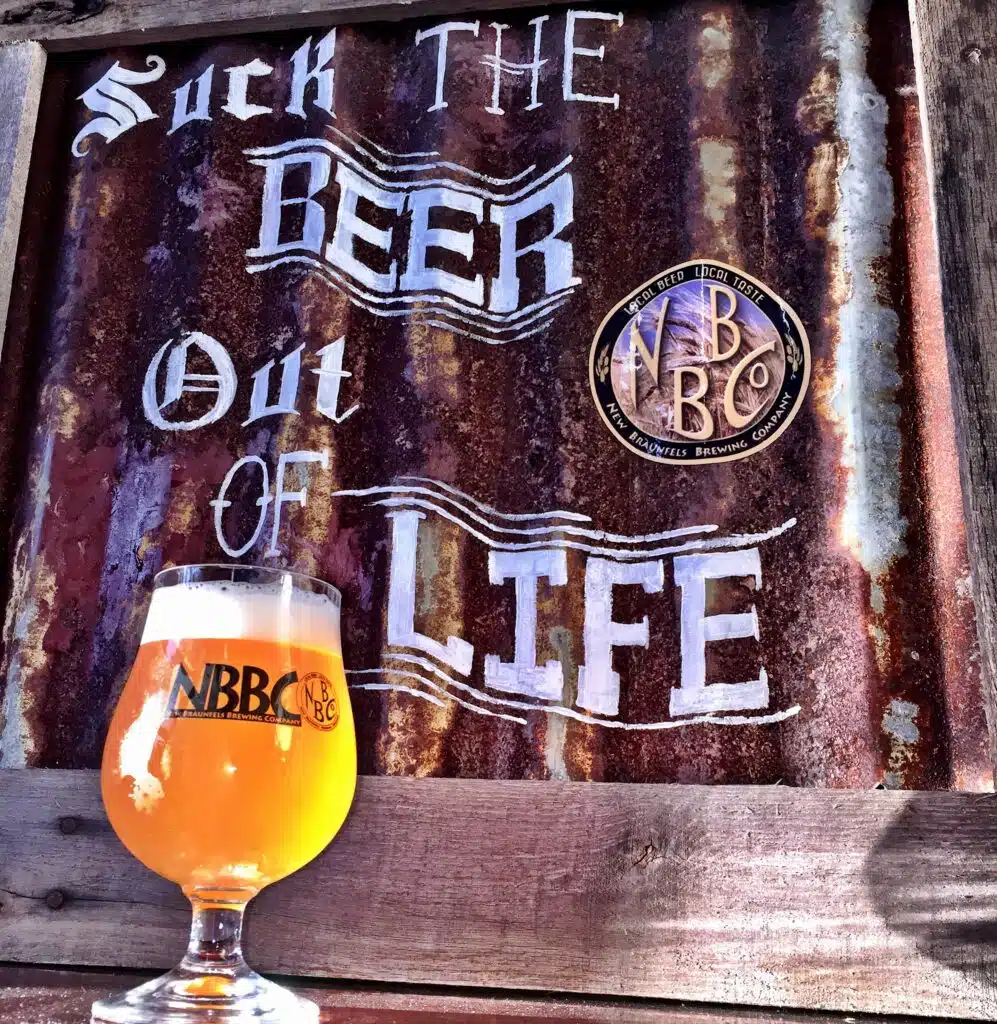
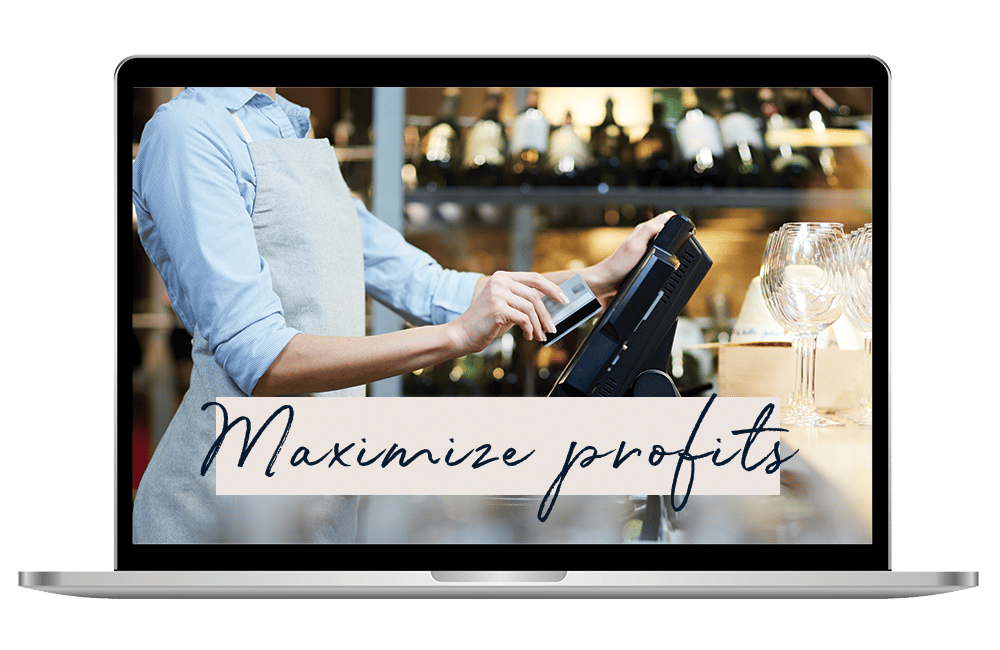
The three costly mistakes you could unknowingly be making?
Find out in this FREE guide and restaurant assessment specifically designed to reveal the unexpected hurdles standing between you and exponential business growth.
Thank You To Our Sponsors
The key to restaurant communications is cutting edge tech for your customers and team. For more than 35 years, JTECH has been at the forefront of Restaurant Communications.
Restaurant Rockstars listeners get 10% off with our link!
Your operations base camp that scales standard procedures, trains your team, controls operations, and even manages food safety.
Get white glove service with FREE onboarding and implementation.
For a limited time only, popmenu is offering our listeners $100 off your first month plus an unchanging lifetime rate.
Request a DEMO:
Want to become a podcast sponsor?
Please get in touch with Roger at roger@restaurantrockstars.com
